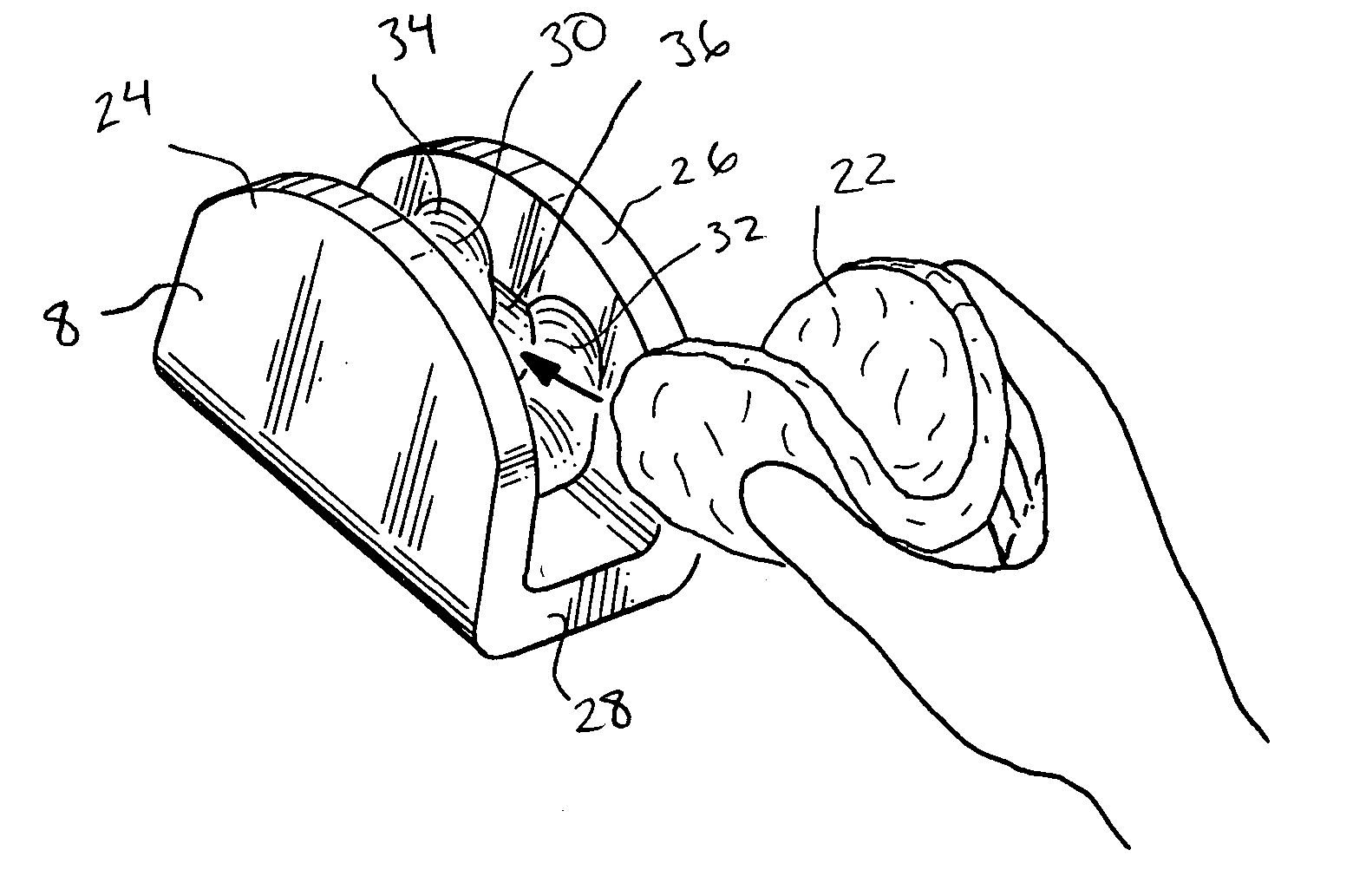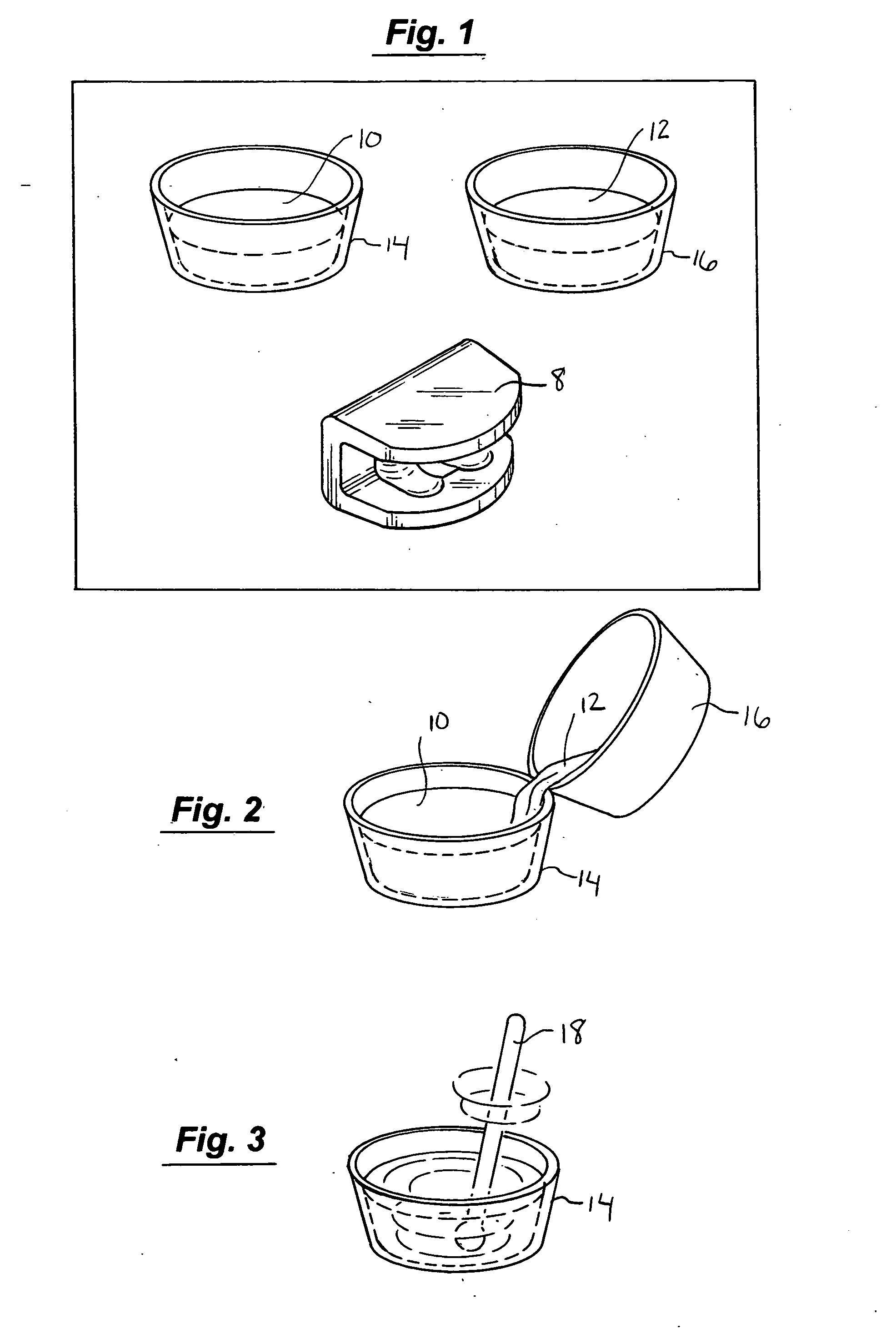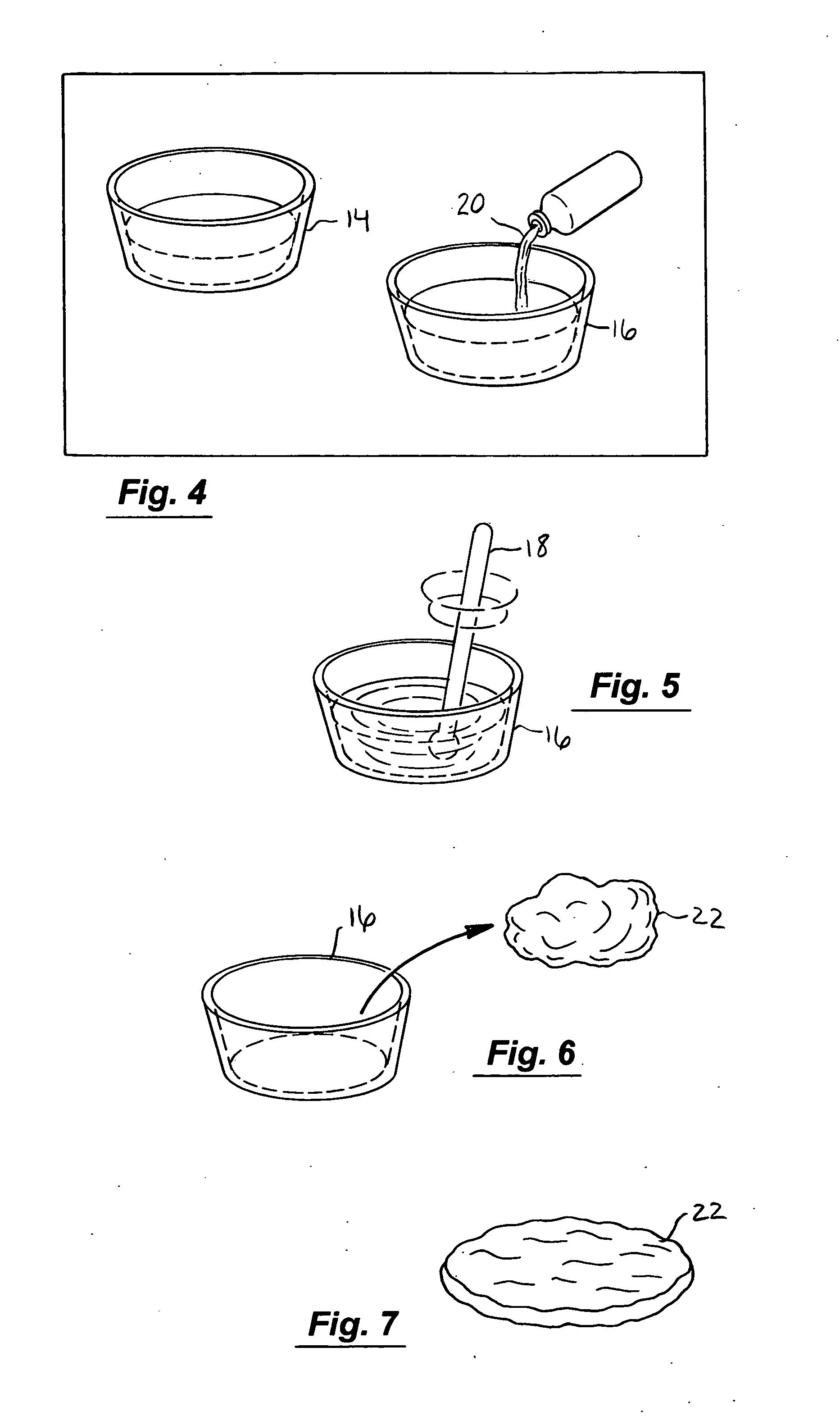Total knee joint mold and methods
a knee joint and mold technology, applied in the field of total knee replacement, can solve the problems of pain in rehabilitation, loss of final normal range of motion and function, and no knee joint, and achieve the effects of reducing friction of the femoral component, reducing the overall success rate of two-stage treatment, and facilitating removal
- Summary
- Abstract
- Description
- Claims
- Application Information
AI Technical Summary
Benefits of technology
Problems solved by technology
Method used
Image
Examples
Embodiment Construction
[0027] The invention provides exemplary techniques and kits that may be used to treat an infected implant area resulting from a total knee replacement procedure. Following diagnosis of the infection, the implant area needs to be surgically accessed. This may be accomplished by forming a long incision on the front of the knee to expose the previously inserted femoral and tibia prostheses that form the knee replacement. This incision is typically through the scar of the original component implantation procedure. All infected total knee replacement implants are removed and a radical soft and hard tissue debridement is performed.
[0028] The implants are replaced with temporary implants that are used to fight the infection. One of the implants may be constructed of bone cement impregnated with an antibiotic while the other is made of a material that interfaces with the bone cement implant without causing excessive wear of the bone cement implant. This may be done during the surgical proc...
PUM
| Property | Measurement | Unit |
|---|---|---|
| area | aaaaa | aaaaa |
| shape | aaaaa | aaaaa |
| mass | aaaaa | aaaaa |
Abstract
Description
Claims
Application Information
 Login to View More
Login to View More - R&D
- Intellectual Property
- Life Sciences
- Materials
- Tech Scout
- Unparalleled Data Quality
- Higher Quality Content
- 60% Fewer Hallucinations
Browse by: Latest US Patents, China's latest patents, Technical Efficacy Thesaurus, Application Domain, Technology Topic, Popular Technical Reports.
© 2025 PatSnap. All rights reserved.Legal|Privacy policy|Modern Slavery Act Transparency Statement|Sitemap|About US| Contact US: help@patsnap.com



